Domenico Pascarella
A Methodological Framework for Positioning of Wireless Sensors in New Generation Launchers
Sep 09, 2025Abstract:In wireless sensor networks for reusable launchers, the electromagnetic characterization and electromagnetic compatibility analyses are relevant due to the reference operational scenario, which implies a complex, and sometimes dynamic, electromagnetic environment. This work proposes a methodological framework for the design of the network and for the analysis of the related electromagnetic environment within the stages of a given launcher. Based on the preliminary positioning of the network nodes, the framework prescribes a workflow and the related toolset for determining the optimal network topology focusing on the weights, the operation of the transceivers, and the overall radiated power. The optimal network configuration is simulated by using computational electromagnetics strategies in order to assess the electromagnetic environment induced by the sensor network itself. The paper provides some results concerning a case study for a specific launcher.
A real/fast-time simulator for impact assessment of spoofing & jamming attacks on GNSS receivers
May 28, 2024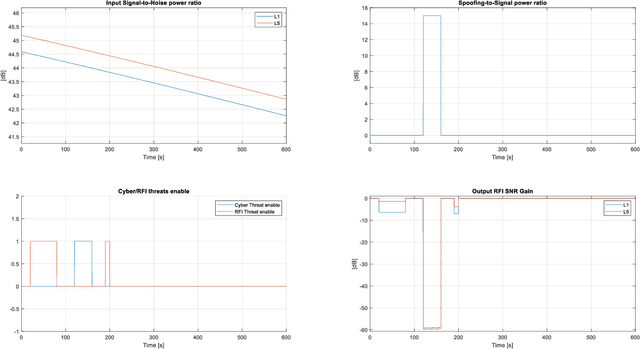
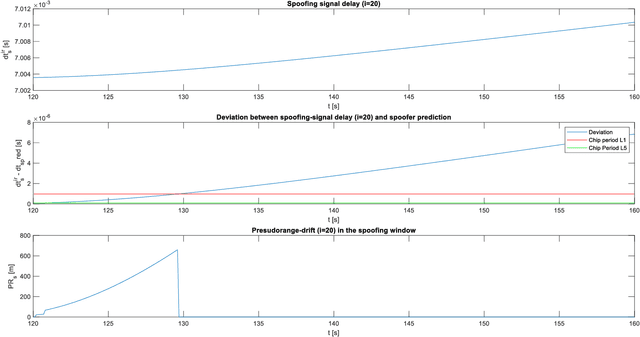
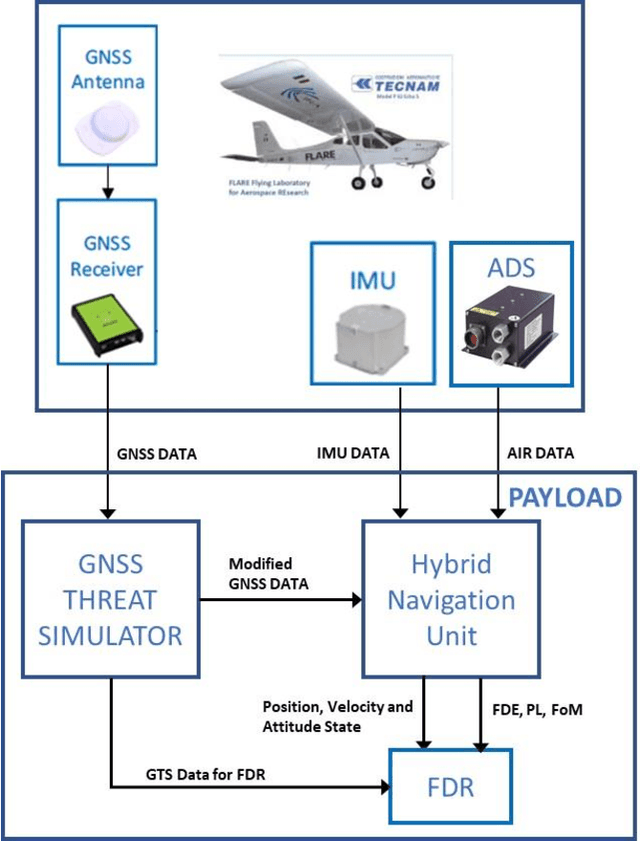
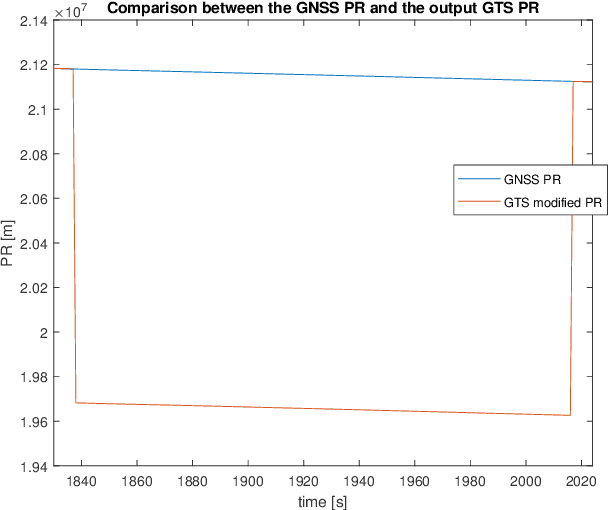
Abstract:In aviation, the impact of threats is becoming increasingly significant, particularly for global navigation satellite system (GNSS). Two relevant GNSS threats are represented by jamming and spoofing. In order to evaluate the technological solutions to counter GNSS attacks, such attacks should be assessed by means of a proper GNSS threat simulator. This work shows the implementation and the testing results of a GNSS security impact simulator which injects the desired threat scenarios as a deviations on the GNSS actual measurements. The proposed simulator can be integrated in both real- and fast-time simulation environments. The provided results confirm the effectiveness of the simulator, and include in-flight demonstrations by means of a flight experimental vehicle.
A cloud-assisted ADS-B network for UAVs based on SDR
May 20, 2022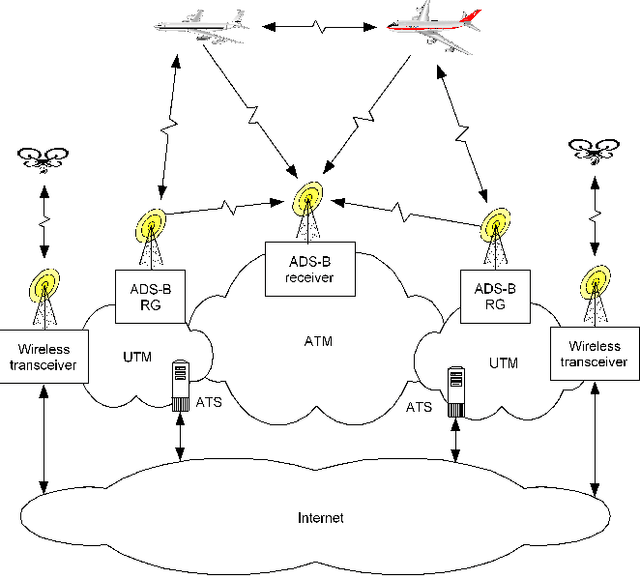
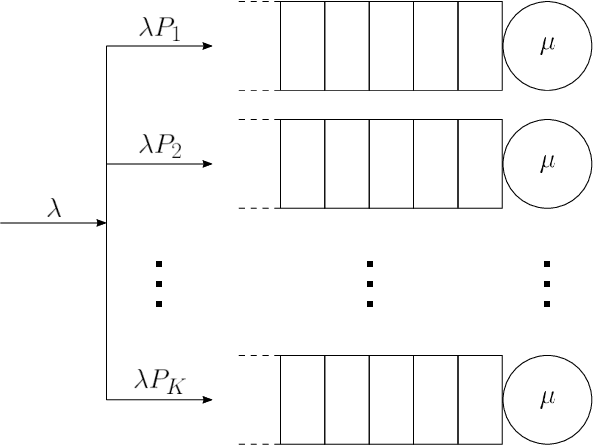
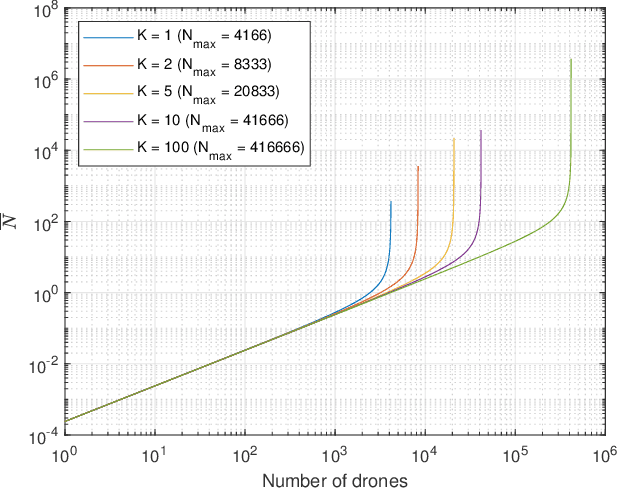
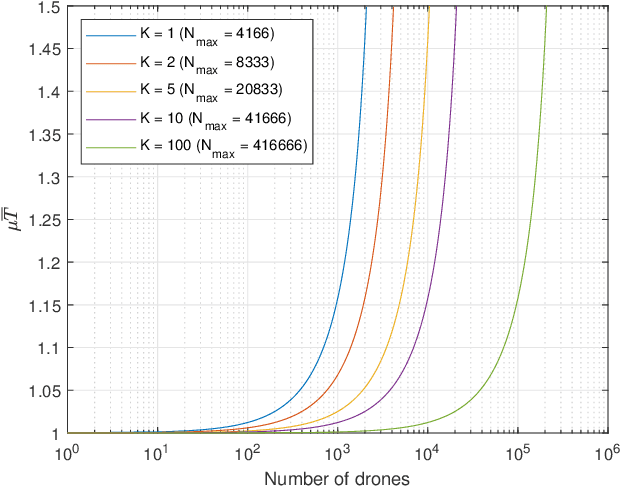
Abstract:Integration of Unmanned Aerial Vehicles (UAVs) or "drones" into the civil aviation airspace is a problem of increasing interest in the aviation community, as testified by many initiatives developed worldwide. Many traditional surveillance solutions for manned aircrafts employ the Automatic Dependent System-Broadcast (ADS-B) technology, which however might present several drawbacks when used for UAVs, especially smaller ones and/or those flying at very low altitudes. We present in this paper a cloud-based surveillance solution for UAVs, which can be considered as an enhancement of a conventional ADS-B system. The proposed solution leverages inexpensive on-board transceivers for transmitting positional messages from the UAVs to the ground. A network of ADS-B gateways, based on the software-defined radio (SDR) paradigm, format the positional messages into valid ADS-B signals and rebroadcast them in the air, allowing thus to emulate a true ADS-B system and overcoming the main disadvantages of the conventional implementation. A preliminary performance analysis of the proposed approach, based on queuing theory, shows the main tradeoffs of the considered approach. Moreover, a physical-layer laboratory implementation of the proposed solution is presented, based on off-the-shelf SDR hardware, which is programmed using the open-source GNU Radio environment.
 Add to Chrome
Add to Chrome Add to Firefox
Add to Firefox Add to Edge
Add to Edge